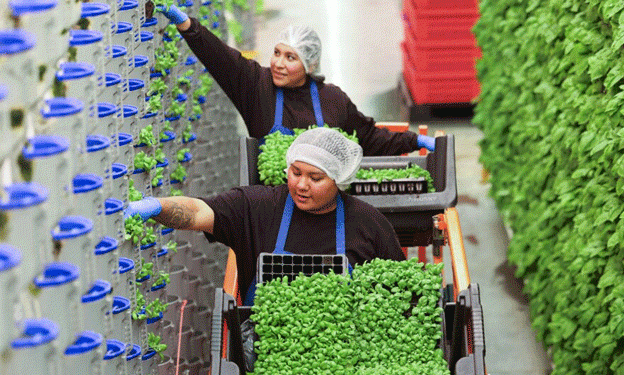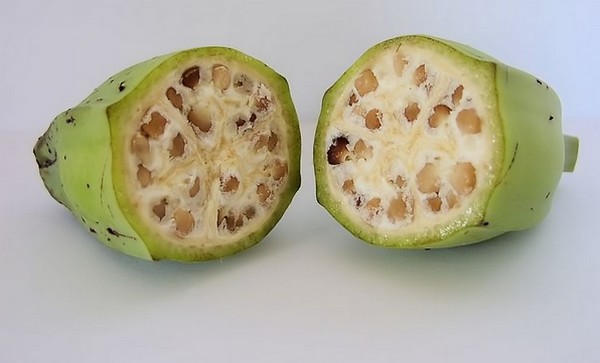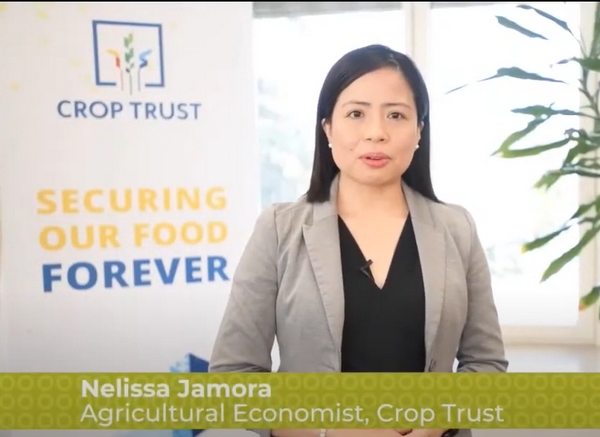With climate change, labor shortages, and supply chain disruptions shaking the global food system, one question looms large for growers: how do we sustainably produce more food with fewer resources? In Cleburne, Texas, Eden Green Technology offers a bold answer — grow upward, not outward.
Inside Eden Green’s 62,000-square-foot vertical greenhouse, rows of butterhead lettuce, basil, and other leafy greens stretch 18 feet high. With more than 340,000 plants under cultivation at any given time, the company has condensed 40–50 acres of traditional farmland into just 1.5 acres. This model is made possible by hydroponics, microclimate controls, and precision lighting systems.
How Vertical Greenhouses Work
Unlike traditional greenhouses or open-field agriculture, vertical greenhouses:
- Use stacked layers of crops, allowing exponential growth in a small footprint.
- Replace soil with nutrient-rich water systems, reducing water use by 70–80%, according to Materials Today.
- Operate in controlled environments, eliminating the need for herbicides and minimizing pest risk.
Eden Green’s innovation lies in its microclimate technology. Instead of heating or cooling the entire greenhouse volume, the company uses localized nodules at each plant site to manage temperature, humidity, and CO₂ levels. This method significantly cuts energy costs and allows for individualized growing conditions, even enabling multiple crop types in the same structure — a challenge in most greenhouse designs.
The facility also runs on a hybrid lighting system that uses 75% natural sunlight, supplemented with algorithmically-controlled LED light bars to provide only the precise amount of light each plant needs — no more, no less.
High Output, Local Impact
According to Dr. Genhua Niu of Texas A&M, vertical greenhouses like Eden Green’s can produce 10 to 20 times more leafy greens per square meter than traditional farming. With the USDA predicting that global food demand will increase by 70–100% by 2050, this type of land-efficient agriculture could be a major piece of the food security puzzle.
Eden Green also reimagines the food supply chain. Located next to a major distribution hub, it supplies Walmart, Sysco, and CAVA, minimizing transportation costs and carbon emissions. CEO Eddy Badrina emphasizes this local-first approach as part of a broader shift toward decentralized, domestic food production.
“You can keep paying more to import food, or you can start growing more of it here at home,” Badrina says. “We’re betting on the latter.”
Challenges and Criticism
Despite the success, critics point to the high startup cost — Eden Green has invested $47 million in its Cleburne facility — and the energy intensity of indoor farming. Some researchers argue these funds might be better spent improving conventional farming systems.
However, as Dr. Shamim Ahamed from UC Davis notes, “It’s not just about energy use. If you grow more food per kilowatt-hour and per gallon of water, and reduce emissions, the overall footprint can still be better.”
To further reduce energy use, Eden Green is exploring renewable energy integration, including solar panels and waste-heat recovery — technologies already making headway in advanced greenhouse systems worldwide.
A Human-Centered Approach
Vertical farming also brings potential benefits for agricultural workers. Eden Green offers year-round employment, shelter from extreme weather, and local hiring. Most employees live within 20–30 miles of the facility, avoiding the seasonal migration typical of field labor.
Operations manager Janice Castro, who started at 19 harvesting basil and now oversees logistics, represents a new generation of indoor ag workers — trained, stable, and invested in long-term growth.
Eden Green plans to double its greenhouse size, hire 100 more workers, and expand into vine crops and pharmaceutical plants, with ambitions to scale nationally and globally.
Eden Green Technology’s vertical greenhouse in Texas is more than an innovation — it’s a blueprint for a more resilient, efficient, and locally-rooted food system. While challenges remain, its ability to dramatically reduce land, water, and pesticide use while increasing yields makes it one of the most promising models in the future of farming. With the right technology, crops, and people, vertical farming isn’t just possible — it’s already happening.










